I’m not known for being a wishy-washy person.
In fact, I’m often thought of as an all-or-nothing type.
But, on this matter, I like it one way sometimes, and sometimes the other way.
Edges
An argument could be made that the bedside table in the photo below should have had its edges rounded. Infrequently, I have bumped into the table on my side of the bed and, if I ever hit the corner, I know it’s going to hurt.
It just hasn’t happened yet.
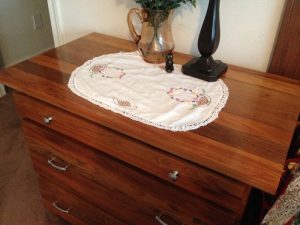
I’m not sure what made me think in the beginning that I wanted these edges sharp, but, it came to be a challenge to keep them from becoming damaged. I think they came out nice, while, at the same time, I recognize the advantages of rounded and chamfered edges.
When I made a matching pair of tables from old, recycled oak flooring, I made up my mind early, I would try to maintain the squareness of all of the corners. After all, if something went bad where it showed, I could always whip out a router and a roundover bit.
On the other hand, I’ve never made a child’s stool without easing the edges. Just common sense, I’d say. Even if I liked the look of the acute junction, I wouldn’t jeopardize a kid’s safety for my taste.
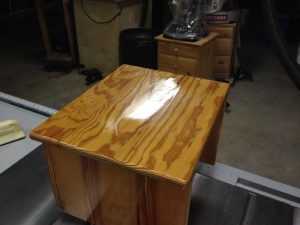
Now that I think about it, sharp edges might not even be attractive in this stool.
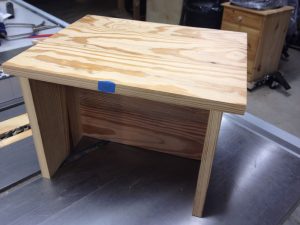
Before rounding over these edges, this antique pine didn’t look like anything special, but …
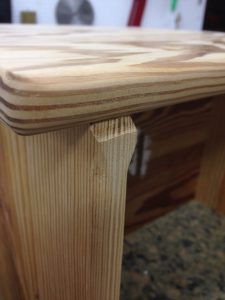
…just a few minutes in the router table and a little sanding, and the grain flowing over the edge comes to life.
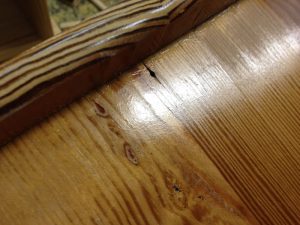
Then, the finish makes it shout.
Jim Randolph is a veterinarian in Long Beach, Mississippi. His earlier careers as lawn mower, dairy farmer, automobile mechanic, microwave communications electronics instructor and journeyman carpenter all influence his approach to woodworking. His favorite projects are furniture built for his wife, Brenda, and for their children and grandchildren. His and Brenda’s home, nicknamed Sticks-In-The-Mud, is built on pilings (sticks) near the wetlands (mud) on a bayou off Jourdan River. His shop is in the lower level of their home.Questions and comments on woodworking may be written below in the comments section. Questions about pet care should be directed to his blog on pet care, www.MyPetsDoctor.com. We regret that, because of high volume, not all inquiries can be answered personally.


I like to ease the edges with a 220 grit sand paper. I can do it by hand or with a orbital sander, If using an orbital sander will achieve a slightly rounder edge by rubbing the edge with a circular motion.
I like routed ogees and the like generally, some kind of detail matching other parts of the piece. If I do leave a squared off edge, I do not sand, I burnish with a steel rod or hardwood dowel, gently though
Rounded edges. Square edges look cheap to me. I use a handplane. I hit it with 150 or 220 to prep for finish.
On most pieces I like a “crisp”, but not sharp, edge. I sand it lightly to remove any splinters and the razor edge that will cut someone.
Depends on what, who, where, wood, finish etc.
I like to use a roundover bit with 1/8″ radius. It gives you ever so slightly more than if you knocked em down by hand with 220.
I use whatever edging suits the design, purpose, location and functionality of the piece… Sounds “edgy”, doesn’t it? 😉